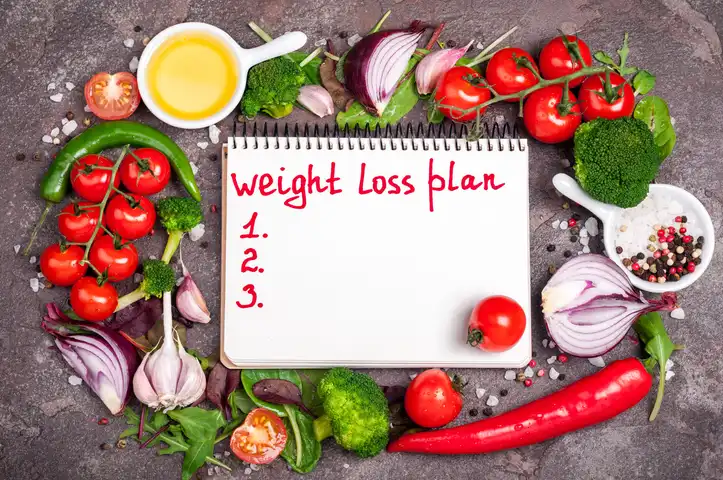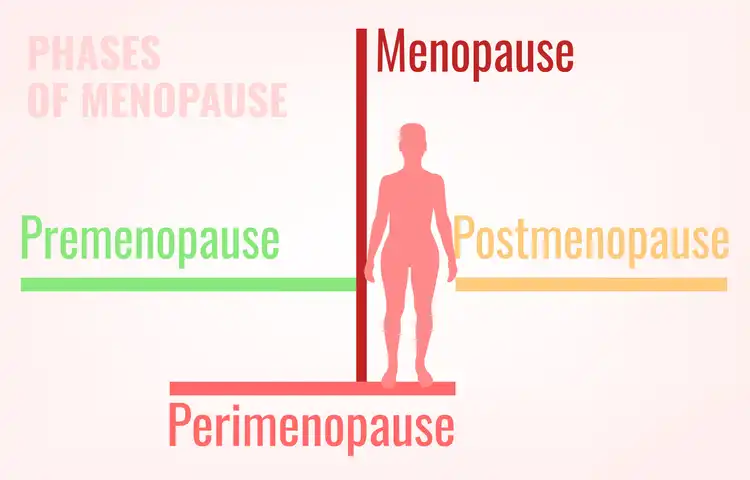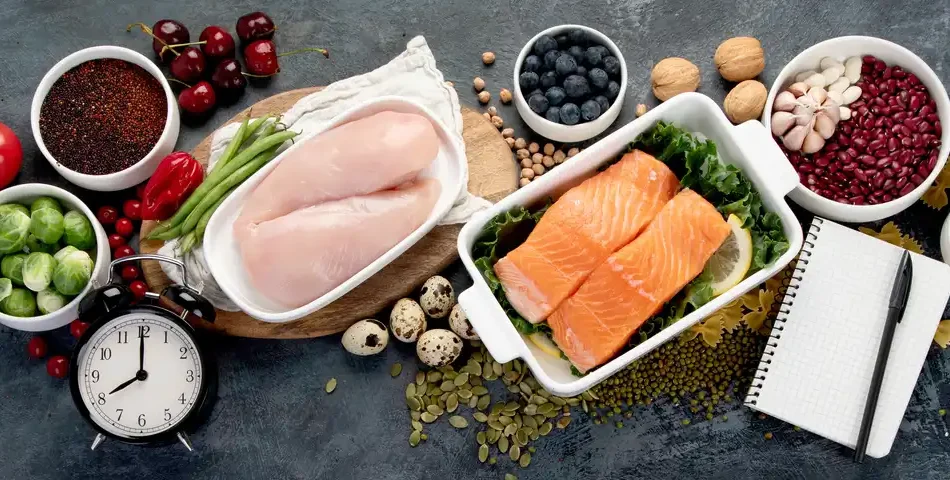Perimenopause is a transitional phase before menopause that often brings about a variety of physical and emotional changes in women. One of the most frustrating challenges during this time is weight gain, particularly around the abdomen. Hormonal fluctuations, decreased muscle mass, and a slower metabolism all contribute to this issue. Fortunately, choosing the best diet to lose weight during perimenopause can significantly improve your health and help manage your weight.
In this comprehensive guide, we explore the best diet to lose weight during perimenopause, focusing on nutrient-rich foods, hormonal balance, and sustainable habits.
For a deeper understanding of the challenges associated with weight loss in this stage of life, check out The Struggle of Weight Loss in Premenopause: What You Need to Know.

Understanding Perimenopausal Weight Gain
Before exploring specific diet strategies, it’s important to first understand the underlying reasons many women experience weight gain during perimenopause:
- Hormonal Shifts: As estrogen levels begin to fluctuate and eventually decline, the body tends to store more fat—especially around the abdomen. A 2017 study published in Menopause revealed that decreased estrogen levels are closely linked to increased visceral fat, which can heighten the risk of insulin resistance and cardiovascular issues (Lovejoy et al., 2017).
- Increased Insulin Resistance: Hormonal imbalances during this phase can make the body less responsive to insulin. A 2013 study in The Journal of Clinical Endocrinology & Metabolism highlighted that insulin resistance is more common among midlife women, which makes losing fat more difficult (Park et al., 2013).
- Decline in Muscle Mass: Starting as early as age 30, women naturally lose about 3–8% of muscle mass per decade. Since muscle burns more calories at rest, this decline leads to a slower metabolism and greater challenges with weight management (Mitchell et al., 2012).
- Sleep Disruption and Stress: Perimenopause often brings about sleep disturbances and increased stress levels. These factors can throw off hunger-regulating hormones like leptin and ghrelin, making it easier to gain weight and tougher to shed it (Spiegel et al., 2004).
For a deeper dive into the connection between hormones and midlife weight gain, The North American Menopause Society offers valuable, research-backed insights.
For more insight into these challenges, read this article on weight loss struggles during perimenopause.

What is the Best Diet to Lose Weight During Perimenopause?
There is no one-size-fits-all answer, but the best diet to lose weight during perimenopause should focus on the following key principles:
1. Prioritize Balanced Macronutrients
- Protein Power: Aim for 20–30 grams of protein per meal. Research shows higher protein intake helps preserve muscle mass and increases thermogenesis, aiding fat loss (Leidy et al., 2015).
- Healthy Fats Matter: Omega-3 fatty acids—found in salmon, flaxseeds, chia, and walnuts—may help reduce fat-storage enzymes and promote fat oxidation (Buckley & Howe, 2009).
- Complex Carbs for the Win: Whole grains, legumes, and sweet potatoes provide slow-digesting energy that minimizes insulin spikes and supports metabolic health.
2. Choose Low Glycemic Index (GI) Foods
Low-GI diets help stabilize blood sugar and insulin levels, which is especially beneficial during perimenopause. A clinical review in Nutrients (2018) noted that women with insulin resistance saw better weight loss results when eating low-GI foods (Wolever et al., 2018). Think quinoa, lentils, steel-cut oats, and leafy greens.
3. Fill Up on Fiber
Fiber doesn’t just aid digestion—it helps regulate hormones and keeps you feeling full longer. A high-fiber diet has been linked to reduced belly fat, with just 10 extra grams per day associated with a 3.7% drop in abdominal fat (Slavin, 2016). Add berries, beans, leafy greens, and flaxseed or psyllium husk to your meals.
4. Go Anti-Inflammatory
Inflammation tends to rise during perimenopause, making weight loss harder. Anti-inflammatory foods like turmeric, ginger, berries, and omega-3-rich fish can counter this effect and support hormonal balance.
5. Focus on Plants
You don’t need to go fully vegetarian, but a more plant-forward diet can help. According to the Women’s Health Initiative Dietary Modification Trial, women who consumed more plant-based foods lost more weight and had a lower risk of metabolic syndrome post-menopause.
6. Mind Your Meal Timing
When you eat can be just as important as what you eat. Research published in Obesity (2019) found that early time-restricted feeding—eating within an 8-hour window earlier in the day—can improve weight loss and insulin sensitivity (Sutton et al., 2018). Try front-loading your calories and avoiding late-night snacking.

Sample Meal Plan: Best Diet to Lose Weight During Perimenopause
This sample day is designed to include around 1,600–1,800 calories, which is a common target for moderate weight loss in perimenopausal women, depending on individual metabolism and activity levels. It emphasizes lean protein, fiber, healthy fats, and low-GI carbs to support hormonal balance and stable blood sugar.
Breakfast (Approx. 350–400 calories)
Greek Yogurt Power Bowl
- ¾ cup full-fat Greek yogurt (~120 cal)
- 1 tbsp chia seeds (~60 cal)
- ½ cup blueberries (~42 cal)
- 1 tbsp ground flaxseed (~37 cal)
- 5 almonds, chopped (~35 cal)
Why it works: High-protein Greek yogurt supports muscle mass, while chia and flaxseeds add omega-3s and fiber to support digestion and hormone regulation. Blueberries are rich in antioxidants.
Mid-Morning Snack (Approx. 200 calories)
Apple & Nut Butter Combo
- 1 medium apple (~95 cal)
- 1 tbsp almond butter (~100 cal)
- 3 walnut halves (~45 cal)
Why it works: This snack provides fiber, natural sweetness, and healthy fats to stabilize blood sugar and reduce hunger pangs.
Lunch (Approx. 450–500 calories)
Grilled Salmon & Quinoa Salad
- 4 oz grilled salmon (~230 cal)
- 2 cups mixed greens (~20 cal)
- ½ avocado (~120 cal)
- ½ cup cooked quinoa (~111 cal)
- Cherry tomatoes, cucumbers, olive oil & lemon dressing (~50–80 cal)
Why it works: Salmon delivers high-quality protein and anti-inflammatory omega-3s. Quinoa adds fiber and slow-digesting carbs. Avocado and olive oil help absorb fat-soluble vitamins and support hormone production.
Afternoon Snack (Approx. 150 calories)
Veggies & Hummus Plate
- 1 cup mixed raw veggies (carrots, bell peppers, cucumbers) (~50 cal)
- 2 tbsp hummus (~100 cal)
Why it works: This combo is fiber-rich and provides plant-based protein. The crunch helps satisfy cravings without resorting to chips or crackers.
Dinner (Approx. 450–500 calories)
Nourish Bowl with Sweet Potatoes & Black Beans
- ½ cup cooked black beans (~114 cal)
- ½ cup roasted sweet potato (~90 cal)
- 1 cup sautéed kale in 1 tsp olive oil (~100 cal)
- ¼ avocado (~60 cal)
- 2 tbsp tahini dressing (~100 cal)
Why it works: A hormone-balancing meal loaded with fiber, complex carbs, and healthy fats. Black beans and kale support iron and magnesium intake—important minerals during perimenopause.
Optional Evening Snack (Approx. 100–150 calories)
Yogurt & Berries
- ½ cup unsweetened Greek yogurt (~60 cal)
- ¼ cup sliced strawberries or kiwi (~25 cal)
- Dash of cinnamon or nutmeg
Why it works: If you’re still hungry before bed, this protein-rich snack supports muscle repair and won’t spike your blood sugar. Cinnamon helps regulate glucose levels naturally.
Hydration
- Daily goal: ~2–2.5 liters of water
- Herbal teas (peppermint, rooibos, or chamomile) help reduce bloating and support relaxation.
- Limit caffeine after 2 PM to avoid sleep disruption.

Lifestyle Tips to Complement the Best Diet to Lose Weight During Perimenopause
Diet is just one piece of the puzzle. Here are additional tips to support your weight loss journey:
1. Strength Training
According to a study published in Obesity (2017), strength training 2–3 times a week can reduce abdominal fat and improve metabolic markers in postmenopausal women (Beavers et al., 2017).
2. Cardiovascular Exercise
Moderate-intensity cardio like brisk walking or cycling for 150 minutes per week is ideal. High-Intensity Interval Training (HIIT) has also shown promise in reducing fat mass more effectively than steady-state cardio.
3. Sleep Hygiene
Lack of sleep increases cortisol and ghrelin, which stimulates hunger and cravings. Aim for 7–9 hours of uninterrupted sleep. Limit screen time and caffeine before bed.
4. Stress Management
Mindfulness practices like meditation and yoga help reduce cortisol levels. A 2018 study in Psychoneuroendocrinology showed that regular meditation reduced abdominal fat and improved insulin sensitivity (Daubenmier et al., 2016).
5. Limit Alcohol and Caffeine
Alcohol disrupts hormone function and sleep quality. Caffeine, especially in the afternoon, can interfere with circadian rhythms.
6. Track Progress Without Obsession
Rather than focusing solely on the scale, track other progress indicators such as energy levels, mood, waist circumference, sleep quality, and strength gains. Weight loss during perimenopause is a holistic journey that includes mental, emotional, and physical well-being.
Conclusion
Losing weight during perimenopause requires a combination of hormonal awareness, nutrient-dense food choices, exercise, and stress management. By focusing on high-quality protein, healthy fats, and fiber-rich foods, you can support your body through this transition, reduce inflammation, and balance hormones.
The best diet to lose weight during perimenopause is not about extreme restriction, but rather adopting a sustainable and balanced lifestyle that supports your long-term health.







